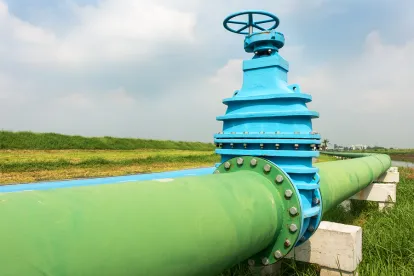On June 22, 2021, the U.S. Government Accountability Office (GAO) published a report titled “Performance Measures Needed to Assess Recent Changes to Hazardous Liquid Pipeline Safety Regulations.” The Report recommends the Pipeline and Hazardous Materials Safety Administration (PHMSA) develop and use performance measures to assess whether the changes made by PHMSA’s final rule, “Pipeline Safety: Safety of Hazardous Liquid Pipelines” (2019 Rule), have achieved, or will achieve, the desired outcomes and improved pipeline safety. Under the recommendation, PHMSA should include targets for the expected levels of performance hazardous liquid pipeline operators should achieve and specific timeframes in which to achieve those results. It is unclear whether hazardous liquid pipeline operators would have to comply with interim performance targets on top of the 2019 Rule deadlines, or if PHMSA would merely use the timeframes to internally assess operator compliance. PHMSA should resolve this ambiguity within the year.
Background
Section 5(a) of the PIPES Act of 2016 required GAO to report on integrity management programs for hazardous liquid pipeline facilities after PHMSA publishes a final rule impacting pipeline safety. This provision allowed GAO to evaluate whether PHMSA’s regulations achieve their purpose of increasing pipeline safety and to propose additional measures for PHMSA to justify the regulatory changes. In 2019, PHMSA’s final rule impacted pipeline safety through the following amendments:
-
Extended annual, accident, and safety-related condition reporting requirements to certain gravity and gathering lines;
-
Required operators to inspect all pipeline facilities potentially affected in extreme weather and natural disaster events within 72 hours of the event;
-
Required expanded use of leak detection systems;
-
Required pipeline integrity assessments outside of high consequence areas (HCAs);
-
Required operators to ensure that all pipelines located in HCAs and “could affect HCA” areas can accommodate inline inspection tools;
-
Changed integrity management program amendments like requiring operators to consider new data when analyzing the integrity of pipeline segments and verifying risk factors on at least an annual basis.
Report Findings
After the 2019 Rule, GAO examined the perspectives of pipeline stakeholders on the benefits and challenges of these amendments, and the steps PHMSA has taken to inform stakeholders of these changes and measure their impacts on pipeline safety.
GAO interviewed stakeholders including 11 pipeline operators, officials from PHMSA’s five regional offices, and officials from six state pipeline safety offices. Generally, the stakeholders stated the 2019 Rule would enhance hazardous liquid pipeline safety, with extending pipeline integrity assessments outside HCAs, and requiring inspections after extreme weather events or natural disasters being the two most supported amendments. Stakeholders stated the 2019 Rule would not create significant operational challenges partially because every operator has already been performing at least one of the safety practices prior to PHMSA enacting the 2019 Rule. Moreover, every operator specified changes that would increase costs in the form of additional training and staffing, pipeline modification, and equipment acquisition.
On the federal side, GAO found PHMSA had not developed metrics to evaluate the safety benefit, if any, from the 2019 Rule. In the 2019 Rule, PHMSA claimed the changes would reduce injuries and fatalities, cleanup and response costs, property damage and product loss, and ecosystem effects. GAO found absent any metric to evaluate the safety impact of the amendments, PHMSA does not have the means to gauge whether the specific amendments are achieving the stated objectives.
GAO analyzed PHMSA’s hazardous liquid pipeline accident data from 2011 to 2020. GAO found a 28 percent reduction in accidents from 2015 with a decline in accident-related fatalities, injuries, or impacts to the environment. Pipeline accidents can have severe impacts, but the majority of accidents involved leaks as opposed to ruptures with 72 percent of all accidents being contained on the operator’s property. Over the past 50 years, industry has improved safety practices from advances in welding to developing and implementing specialized leak detection systems and in-line inspection tools. Against these safety practices, federal agencies need to quantify the additional safety value of costly regulations. GAO specifically mentioned the four PHMSA objectives in reducing impacts from pipeline accidents. Developing metrics to assess the safety-related impact of regulations would provide quantitative data on the efficiency of government oversight. The GAO Report recommendation that PHMSA develop measures to identify the expected level of performance operators should achieve within specified timeframes would allow the agency to evaluate whether the 2019 Rule is achieving its stated objectives and increasing pipeline safety.
Going Forward
GAO provided a draft of the Report to the Department of Transportation (DOT) and it concurred with the recommendation stating it will provide a detailed response to the recommendation within 180 days of the report’s issuance. B&D will provide additional updates regarding DOT’s response and whether PHMSA will require interim performance targets related to the 2019 Rule as they develop.




 />i
/>i

